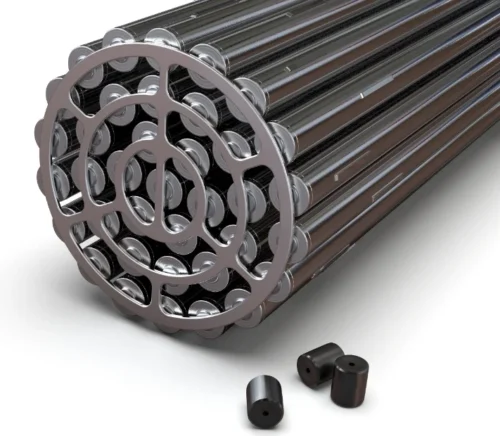
All startup rods are shipped in our Type-A radioactive shipping containers, which are designed for safe and efficient transportation and unloading. Domestic and international shipping are available.
Choose Frontier for Nuclear Startup Rod Assemblies
For decades, we have worked with customers including Westinghouse, Framatome, DOE National Laboratories, and others to provide californium-252 neutron sources, nuclear start up rods, and other critical services. Please contact us to learn more or to request a quote.
Real-World Applications
The Westinghouse team was challenged to meet international standards and urgent timelines of a fuel loading schedule at their Korea-based plant. Learn how Frontier Technologies Corporation helped Westinghouse achieve their goals in this case study.
"*" indicates required fields
Californium-252 as a Startup Neutron Source
While uranium is commonly used as fuel inside a nuclear reactor, it cannot reliably start a nuclear fission reaction on its own. A highly active, stable source of neutron emission, such as californium-252, is needed to bombard uranium oxide fuel rods with neutrons, starting a sustained nuclear reaction.
Startup rods are interspersed with fuel rods within the reactor core to provide the initial reaction that triggers a long chain of nuclear fission reactions from the fuel rods.
Common Applications For Start-Up Rods Include:
- Axial offset control
- Emergency shutdowns
- Reactor and Power control
- Reactor shutdown
- Reactor startup
Californium-252 Solutions For The Nuclear Industry
Californium-252 (Cf-252) sources are essential to initiate a nuclear fission reaction in nuclear reactor start-up rods. Learn more:
Californium Production
The element was first produced at the University of California’s Radiation Laboratory in Berkeley. A microgram of curium was bombarded with alpha particles in the lab’s cyclotron to produce 5,000 atoms of the element with a half-life of 44 minutes. Weighable quantities of Cf-252 were later produced in 1954 and, today, the Oak Ridge National Laboratory in Oak Ridge, Tennessee uses its High Flux Isotope Reactor (HFIR) to produce an average of 25mg of the isotope per year.
Californium-252 (Cf-252) ProductionCalifornium Facts
As a strong neutron emitter, this isotope is a hazardous material to handle, and is rarely found in nature, due to its very short half-life.
Californium UsesGlossary of Californium Terms
To help you better understand our sources and what we do, we have compiled the following glossary to clarify the terms related to californium-252, neutron sources, and neutron radiation, including resources for further exploration into each term.
Californium Glossary of Terms